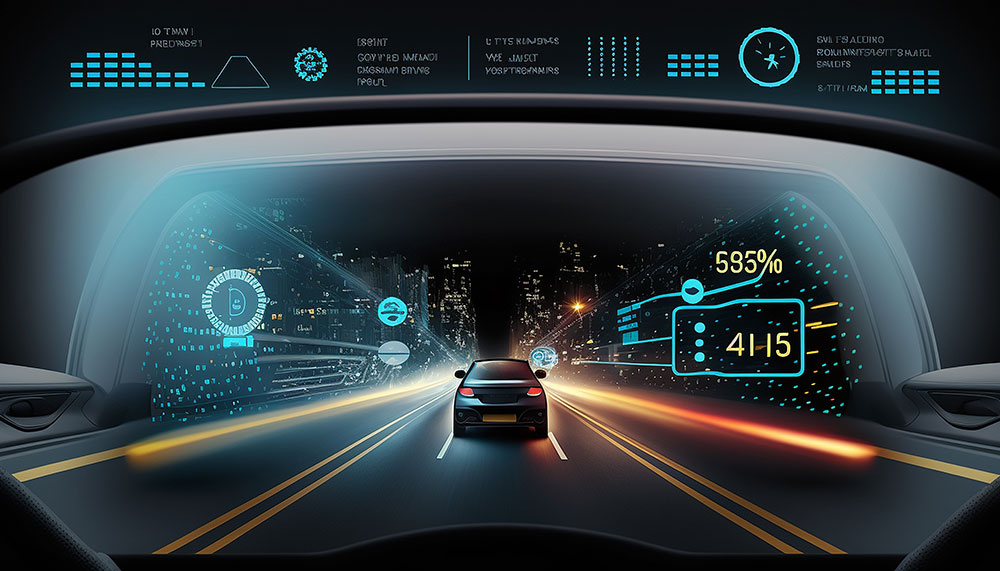In our tech-driven era, vehicle monitor systems are becoming indispensable to fleet management and personal automobile usage. With a unique blend of technology and software, these intelligent systems offer enhanced security and improved visibility for your vehicle. This article explores the importance of vehicle monitoring systems, their key components, and role in fleet safety and management, as well as how to select the right system for your needs.
Understanding the Importance of Vehicle Monitor Systems
Vehicle Monitor Systems (VMS), encompassing Vehicle Tracking and Fleet Management Systems, underpin commercial and private transport security and management. They’re pivotal for enhanced security through real-time tracking and potential remote shutdown. Efficiency follows through accident response systems, driver accountability, preventative maintenance, and cost-saving measures. Environmentally, they aid in minimizing carbon emissions and maintaining regulatory compliance. VMS also influences customer service positively and boosts operational productivity. Safety improvements include features like accident reconstruction and seatbelt monitoring. Insurance benefits extend to those utilizing VMS due to improved safety measures, elevating their significance in contemporary transport.

Critical Components of a Vehicle Monitor System
Several key components are integral for optimal security and visibility in designing a Vehicle Monitor System.
Firstly, Vehicle GPS Tracking is fundamental as it employs satellite technology to offer real-time location updates. These coordinates are laid onto a street map by mapping software, enabling precise vehicle positioning accounting for the exact street address.
Secondly, the Vehicle Health Monitor plays a critical role by keeping tabs on the vehicle’s overall health. It fetches data from the vehicle’s onboard computer, alerting users about potential issues ranging from emission systems, engine temperature, and powertrain to fuel system in real-time.
Additionally, Fleet Management Software is an essential component that affords complete transparency in your fleet operations. This software component encompasses fuel and cost management, report generation and analysis, and driver management to plan maintenance schedules and manage driver behavior.
A Driver Safety Monitor is necessary to ensure the driver’s safety. It monitors driver activities, detecting risky behaviors such as sudden braking, swift acceleration, or unsafe speeding, thus enabling proactive measures for maintaining security.
Finally, Surveillance Cameras provide the reassurance of security inside and outside the vehicle. They deliver real-time video feeds and cache footage for future reference, increasing visibility and aiding incident management.

How Vehicle Monitor Systems Enhance Security
Vehicle Monitor Systems (VMS) are advantageous for strengthening security because they provide real-time vehicle surveillance and tracking. If a car is stolen, its GPS-enabled location tracking can aid authorities in recovery. Image capture and speed monitoring features enhance road safety, while VMS sends crucial alert notifications in emergencies. The system’s ability to record and report daily activities, control a vehicle remotely, enforce geographical boundaries through geo-fencing, and turn off the engine in case of theft acts as a formidable deterrent against unauthorized use. Lastly, it helps reconstruct accidents for insurance purposes, increasing VMS’s indispensability in ensuring maximum vehicular safety.
Choosing the Right Vehicle Monitor System
Choosing the correct Vehicle Monitor System requires a targeted examination of your needs. A beneficial system will offer real-time tracking, fuel monitoring, safety measures, and easy-to-use interfaces. It should integrate with other software systems, provide maintenance alerts, offer excellent customer support, and align with your budget. Superior systems should incorporate comprehensive reporting capabilities for improved business decision-making. With the ample options available, identifying your unique requirements will aid in selecting a system that optimally enhances the security and visibility of your vehicle operations.

The Role of Vehicle Monitor Systems in Fleet Management
Vehicle monitoring systems are paramount in fleet management. They enable real-time tracking and provide comprehensive vehicle reports to enhance productivity, decrease costs, and bolster safety measures. These systems have geo-fencing features, which alert managers about vehicles crossing predetermined boundaries. They proactively manage vehicle performance, facilitating effective maintenance scheduling and forewarning potential breakdowns. They also monitor driver behavior, improving safety and aiding in driver training.
Additionally, these systems optimize routes for operational efficiency and heightened customer service. Vehicle monitor systems also increase fleet security, foster regulatory compliance, manage costs, and support ‘green’ initiatives. They play a vital role in crisis management and may offer insurance benefits.
In summary, vehicle monitor systems are about more than just tracking and monitoring. They are about building a security wall around your automobiles and maximizing visibility for better management. As technology advances, the importance of these systems is expected to grow increasingly essential. Therefore, selecting the right vehicle monitor system can be a game-changer, optimizing operational efficiency and improving safety.